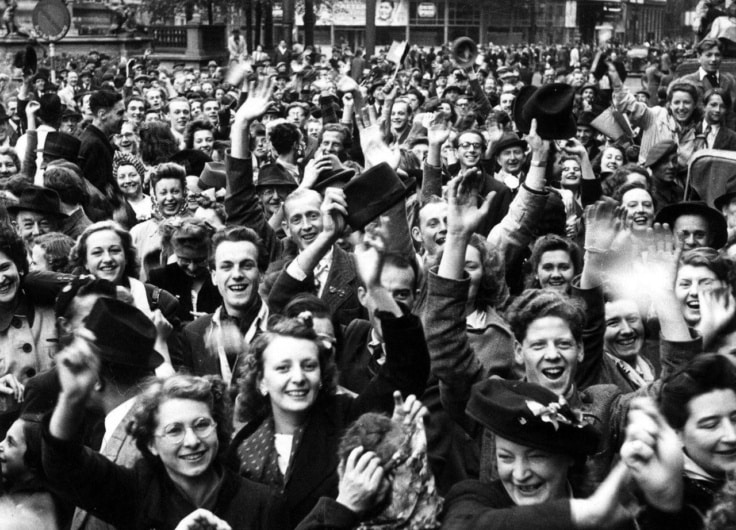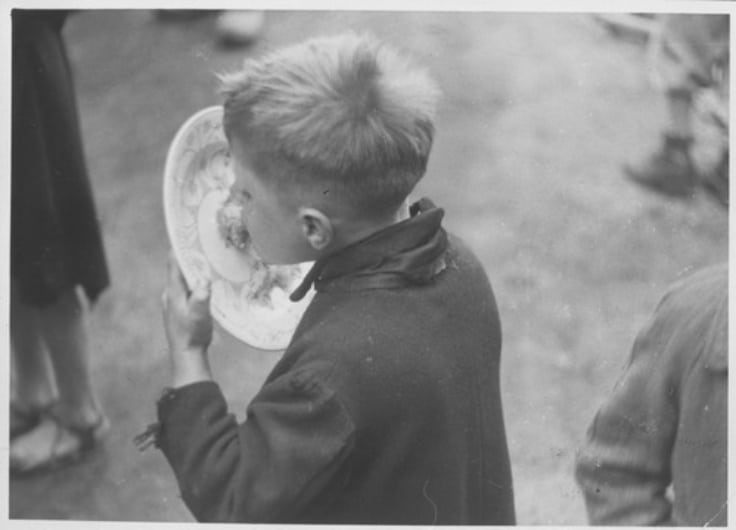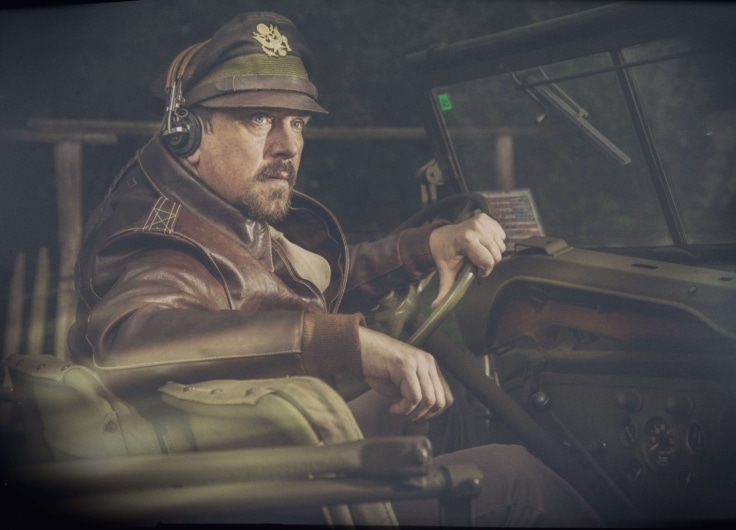The Battle of Arnhem: An Unfortunate Bridge Too Far
The Battle of Arnhem, which was fought from 17 to 25 September 1944, famously ended in failure for the Allied forces. On the contrary, for the German troops, the clash meant a final major military victory.
On Sunday 17 September 1944, more than 1,000 military cargo aircraft and 500 gliders carrying 20,000 troops, over 500 vehicles and at least 300 artillery pieces flew from England to the south of the Netherlands. American Airborne Divisions were dropped near Eindhoven and Nijmegen; British and Polish ones were dropped near Arnhem.
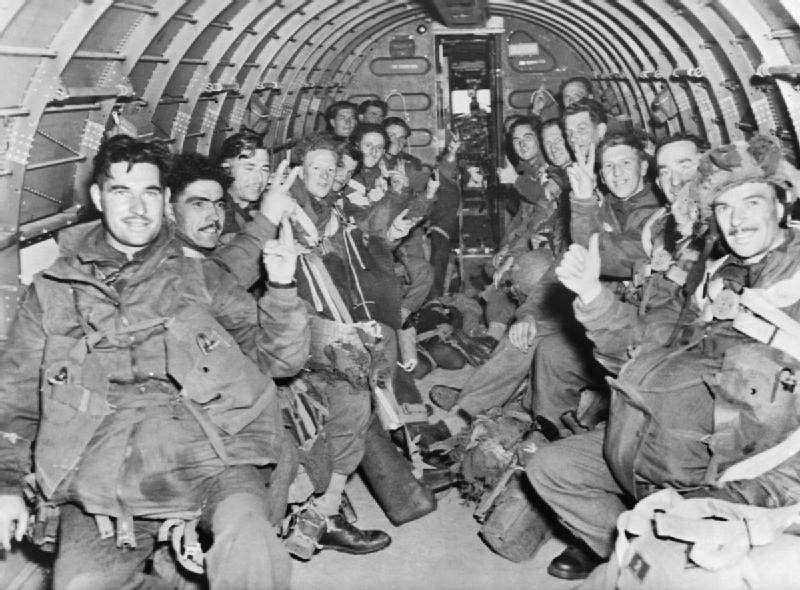 British paratroopers inside a C47 transport aircraft
British paratroopers inside a C47 transport aircraft© British Army
At the same time, 50,000 Allied troops and 22,000 vehicles advanced via Eindhoven towards the Maas River Bridge near Grave, the Waal River Bridge near Nijmegen and the Arnhem bridge over the Rhine.
Operation ‘Market Garden’ (‘Market’ referring to the airborne assaults; ‘Garden’ referring to the ground attacks) was supposed to lead to the rapid liberation of the Netherlands. The bridge near Arnhem turned out to be a bridge too far and both the Brits and the Poles were forced to retreat towards the south of the Rhine. Consequently, the north and the west of the Netherlands faced a period of famine, the so-called Hunger Winter. The operation did, however, herald the liberation of the southern regions of the Netherlands.
Calculated gamble
The audacious plan was devised by British Field Marshal Montgomery who managed to get permission for this not quite calculated gamble from big boss Eisenhower. This happened at the expense of his rival, boisterous US General Patton, who wanted to push on from eastern France towards German Saarland.
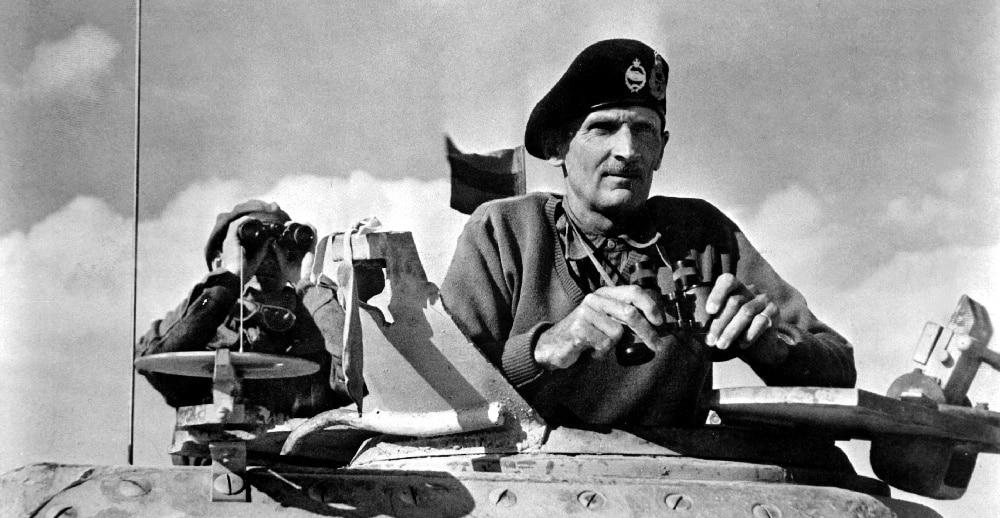 British Field Marshal Montgomery
British Field Marshal MontgomeryIn the end, the operation failed; the German troops’ resistance and responsiveness was severely underestimated. Moreover, the Allied forces had completely overlooked two German armoured divisions, consisting of about 6,000 soldiers. In addition, the British had been dropped too far from the bridge near Arnhem, ruining the element of surprise.
To make matters worse, the Germans happened upon the plan detailing the entire operation in the shirt pocket of a dead officer found at the crash site of a glider. Furthermore, radio communication with the United Kingdom was badly disrupted.
In the meantime, precious time was wasted when conquering Zeeland, which proved a necessary thoroughfare for transportation of materials to the newly liberated Antwerp port.
Amateurism, bad luck and a series of unfortunate events – as per usual. Afterwards, the British, the Poles and the Americans would play the blame game. Churchill, in turn, would describe the operation as a heroic failure.
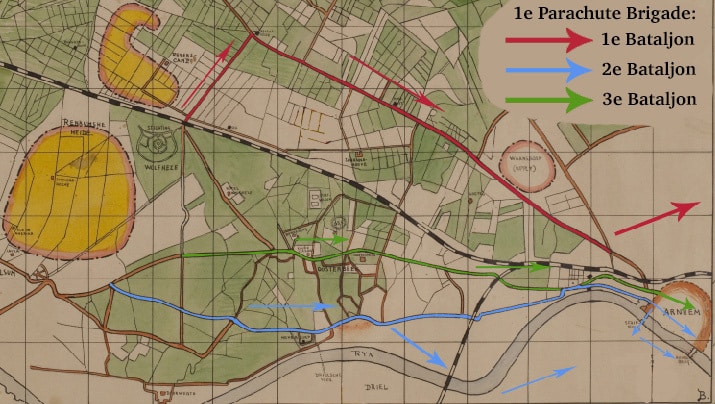 The plan of attack of the first parachute brigade
The plan of attack of the first parachute brigade© slag-om-arnhem.nl
Around 6,000 British, 4,000 American and 5,000 German soldiers lost their lives. Approximately 3,600 Dutch citizens were killed. An additional 6,000 British troops were taken as prisoners of war.
The war would not come to an end in 1944. The German forces were given the time to ‘rally the troops’ in preparation for their last major offensive in the Ardennes. After having suffered several defeats ever since the D-Day Landings in Normandy on 6 June, this final German victory, near the Reich‘s frontier, restored the Wehrmacht’s faith in their ability to resist the Allied forces’ supremacy, and made them hopeful about negotiating a truce.
A Movie too Far?
In the summer of 1976, Hollywood descended on the river IJssel in Deventer – back then, that particular location was a closer fit to Arnhem than Arnhem itself – in order to shoot the (at that time) most expensive film ever made, A Bridge too Far. A British general supposedly used that phrase to criticise Montgomery’s plan. Although that statement is most likely apocryphal, it would become an idiomatic expression to describe a totally impossible endeavour.
Director Richard Attenborough hired an ensemble cast of superstars, ranging from Sean Connery, Michael Caine, Dirk Bogarde (who actually took part in Operation Market Garden as a lieutenant), Gene Hackman, Anthony Hopkins, Laurence Olivier, and Robert Redford to Norwegian-born actress Liv Ullmann and Dutch actor Peter Faber. Olivier and Ullmann were allowed to speak a few words of sub-standard Dutch in the film, which was the first one to ever depict an American defeat. Montgomery was conspicuous by his absence on the silver screen.
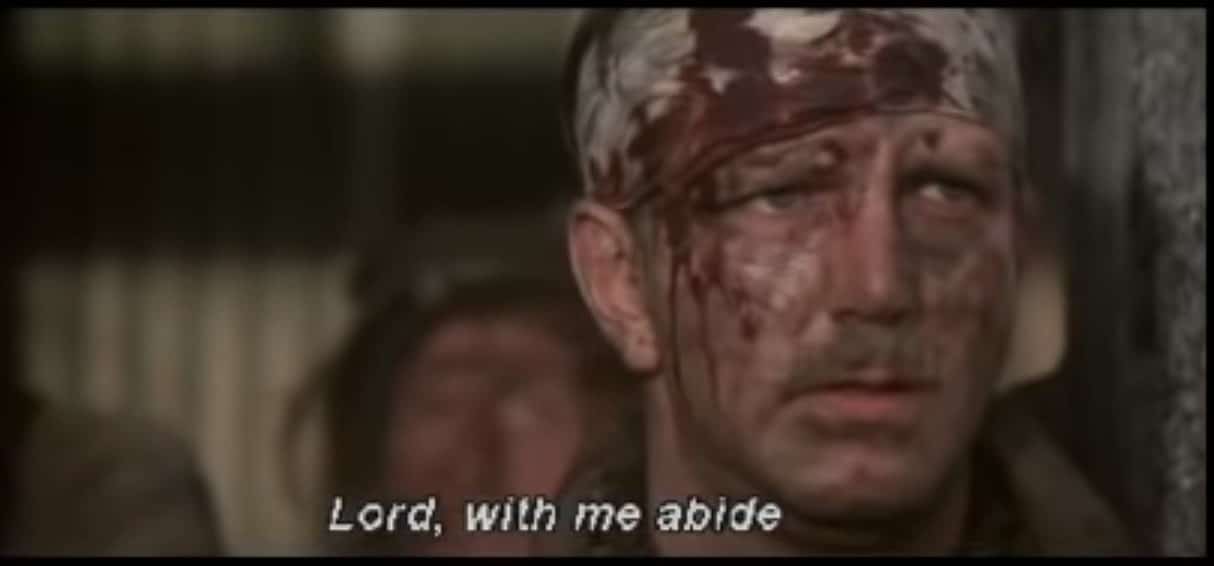 Still from ‘A Bridge Too Far’
Still from ‘A Bridge Too Far’For those in the know, the film, with its vintage patina, is a timeless classic. In the second to last scene, we see a grassy field in front of a hotel that has been blown apart, strewn with wounded soldiers, all crammed together, singing the hymn ‘Abide with Me’, while waiting for the Germans to arrive. Nobility of failure.
In a Dutch documentary, I saw an old German man walk across that very same meadow 70 years on, remembering the eighteen-year-old soldier he once was. He had carried the complete and utter silence of those hurt and defeated enemies with him for his entire life.


